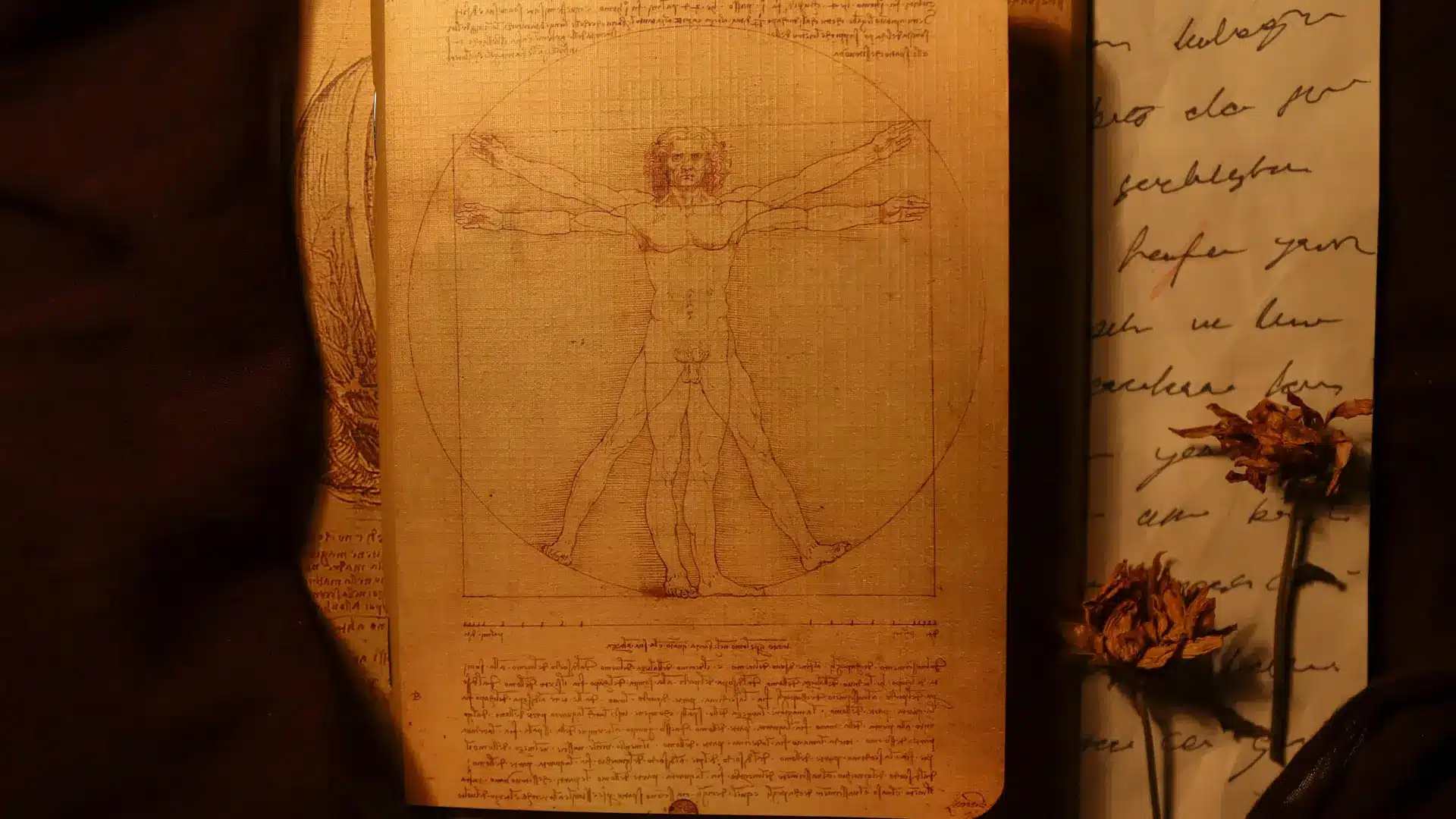Da Vinci was fascinated by the geometric proportions of nature. In his famous work, The Vitruvian Man, he illustrated how the human body is a perfect expression of geometry and symmetry. Beauty comes from things being in proportion, which results in visual harmony. Da Vinci did this by using The Golden Ratio (Sectio Aurea), a ratio that is found everywhere in nature and is often associated with aesthetic perfection. This allowed him to capture very realistic and dynamic proportions and facial expressions in his drawings and paintings. To do this, he studied the human body in detail, both the bone structures, muscles and nerves to understand the anatomy, as well as observing movement and expression.
Da Vinci did not see beauty as something superficial, but as a balance between appearance and inner qualities. He emphasized that true beauty comes from inner harmony, intelligence and the right proportion of the parts to the whole. His most famous works, such as the 'Mona Lisa', are admired for their mysterious combination of outer and inner beauty. Da Vinci's portraits, such as the 'Mona Lisa' and 'Lady with an Ermine', show not only outer beauty, but also a subtle expression of emotions. This principle emphasizes that true beauty also includes emotional depth and inner richness.
In the Da Vinci principle, beauty is more than a matter of outward appearance. It encompasses the harmony of natural proportions, the vibrancy of life, and the connection between inner and outer qualities. All rooted in a deep observation of nature and human life.
